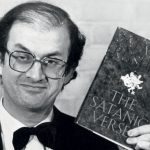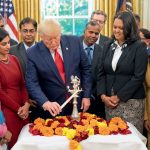The Death of Secularism
Is Turkey’s present India’s future?
 Sumantra Bose
Sumantra Bose
 Sumantra Bose
|
24 Aug, 2017
Sumantra Bose
|
24 Aug, 2017
/wp-content/uploads/2017/08/Secularism1.jpg)
THE TURKISH REPUBLIC’s centenary is imminent—in 2023. The state that exists today bears little resemblance in some fundamental ways to what Mustafa Kemal Ataturk tried to purposefully build in the 1920s and 1930s. In 1928, Kemal’s single-party regime summarily deleted Article 2 of the republic’s 1924 constitution, which had stated: ‘The religion of the Turkish state is Islam’. This came four years after the republican regime’s sensational abolition of the Caliphate, a holdover from the erstwhile Ottoman sultanate, a move that left the leaders of India’s Khilafat movement gobsmacked, and two years after the regime replaced the 1870s Ottoman civil code (the Mecelle), a mish-mash of Sharia and Western legal principles, with a secular civil code modelled on Switzerland’s code of 1912. Tabling the civil code bill in Ankara’s Grand National Assembly, Mahmut Esat, Kemal’s minister of justice and effectively the Ambedkar to Kemal’s Nehru, declared: “Our nation is saved today from the faulty and confusing beliefs of thirteen centuries and, closing the doors of the old civilisation, enters the contemporary civilisation that grants life and light.” Aspects of the speech would be in concord with Yogi Adityanath’s views on Indian history.
From 1931 laiklik (laicism, derived from the French ‘laicite’) became one of the six core principles of the ruling party and in 1937, a year before Kemal’s death from cirrhosis of the liver, Turkey was declared a constitutionally laicist state. As president of the Indian National Congress, Subhas Chandra Bose composed the freedom movement’s official tribute in November 1938 to Ataturk (‘Father of the Turks’), as he became known from 1934: ‘Great as a general, great as a diplomat, great as a social reformer, great as a statesman, great as a fighter and great as a builder…. The death of such a unique personality cannot but move the whole world and particularly oppressed and exploited nations such as ours…I therefore suggest that we [the Congress] observe ‘Kemal Day’ on 19 November and hold meetings at which resolutions should be passed paying our respectful homage to the memory of Ataturk and conveying to the emancipated people of his beloved Turkey our heartfelt sympathy in their national bereavement.’ The 1930s and 1940s were the peak period of Kemalist secularism. In 1945, the Turkish Language Association’s dictionary defined ‘religion’ thus: ‘An idea or ideal to which one fervently adheres. Kemalism is the religion of the Turk’.
Erdoğan’s politics is not about equal ownership, but about his ownership of the state and dominance of the ideological view he represents. His style is a hybrid of neighbourhood goon and schoolyard bully; Modi is polished in comparison
Seven decades on, Kemal’s secular state is literally no more than a memory. The Turkish republic presided over by Recep Tayyip Erdog˘an is, for all practical purposes, based on a Hanafi- Sunni majoritarian definition of Turkish national identity. This framework conveniently excludes most Kurds, except those directly affiliated with Erdog˘an’s Justice and Development Party (Adalet ve Kalkinma Partisi or AKP). Turkey’s Kurds are estimated to be up to 20 per cent of the total population, and about two-thirds are Sunni (the rest Alevi) but unlike the ethnic Turks, they follow the Shafi and not the Hanafi school of Sunni jurisprudence. The AKP, formed in 2001, is descended from Turkey’s first explicitly Sunni-Islamist political party, which was launched in 1970 by a small group gathered around Mehmet Zahid Kotku (1897-1980), the leader of Istanbul’s clandestine Naqshbandi community—the Naqshbandi order was banned along with all other religious brotherhoods or tarikats by Kemal’s regime in 1925—who was also the imam of the Iskenderpasha mosque in the city’s devout Fatih district. The contemporary version of Turkey’s Naqshbandi order, which put down deep roots across Anatolia in the 19th century, is influenced by the orthodox Sunnism preached by an Indian, Ahmad Faruqi al-Sirhindi (1563-1624), who led a mujaddedi (revivalist) reaction against the Mughal monarch Akbar’s attempts to devise a syncretistic faith (Din-i-Ilahi) from a synthesis of Hinduism and Islam. When Kotku urged his disciples to form a political party in the late 1960s, he told them: “The core identity (kimlik) and character (kisilik) of this wounded nation is Islam. Your main heritage is Islam, and you can heal the wound by listening to what our Turkish Muslim people want. What they want is an Islamic sense of justice, and the restoration of their Ottoman-Islamic identity.”
THAT VISION HAS gradually but decisively achieved fruition over the last 15 years under the increasingly commanding leadership of Erdog˘an—like Narendra Modi, a man of humble social origins. When I first visited Turkey in 1999, Erdog˘an was in prison. He had been forced to step down as the elected mayor of Istanbul in 1998, a post he had assumed in 1994, after the staunchly Kemalist hierarchy of the Turkish military intervened in 1997 to stop the growing anti-secularist ascendancy in Turkey’s politics. He was then tried and convicted of making a public speech which allegedly contravened ‘the principles of the secular Republic’, sentenced to a few months in jail and, more important, banned from politics.
All that, too, is now a distant memory nearly two decades later. The AKP is firmly installed as Turkey’s hegemonic party, dominant in most parts of the country. Between November 2002 and November 2015, it won five consecutive parliamentary elections, all but one (June 2015) with a decisive majority of seats. In 2014, Erdog˘an relinquished the prime ministership to a handpicked acolyte after eleven years and ran in the first-ever direct election to the presidency. He prevailed in the first round, with 52 per cent of the nationwide votes. In April this year, he narrowly won a referendum, with 51.4 per cent of the polled votes in an 85 per cent turnout, on reducing parliament to a rubber-stamp body and creating a presidency with virtually unlimited powers, thus formalising his neo-sultanistic regime. The new rules allow him two five-year presidential terms from the next presidential (and parliamentary) elections scheduled for November 3rd, 2019, and, combative as ever, he is looking forward to the 2019 battle. On July 27th, he told a meeting of AKP parliamentarians and government ministers in Ankara: “The 2019 elections have a critical importance for us. We have to work hard to win the hearts of people. Do not leave any door without a knock or any hand unshaken. We have to win 50 per cent [plus] 1 per cent [of the votes]. If someone has become tired, they should leave their position to someone else. This struggle is our second independence war.”
The AKP’s rise to lasting dominance is built on two, mutually reinforcing appeals. The first is the rhetoric of progress, modernisation and development, implemented through infrastructure-building initiatives, poverty-alleviation programmes, and a business-friendly, open-to-foreign-investment strategy that caters to the job-seeking and upward-mobility aspirations of numerous ordinary people. Even as Erdog˘an remains embroiled in an ugly spat with Angela Merkel’s government over his regime’s repressive character—he has called Germans ‘Nazis’ and refers to them collectively as ‘Hans’—his prime minister last month assured representatives of German companies with manufacturing plants in Turkey that they have nothing to fear, that make-in-Turkey is here to stay. Officials of Bosch, Siemens, Mercedes, Metro Group and Thyssenkrupp, among others, attended the meeting in Ankara. The emphasis on modernisation, progress and development is packaged as the building of ‘New Turkey’ and ‘2023 targets’, coinciding with the centenary of the republic.
‘New Turkey’ has another equally integral element and meaning, however. This is the comprehensive de-secularisation of the official version of Turkish national identity and the final dismantling of the Turkish secular state. After a lengthy war of attrition with the erstwhile state-secularist establishment clustered in the military hierarchy, the high judiciary, the Kemalist opposition party (the Republican People’s Party, CHP), the Kemalist media and the metropolitan intelligentsia, Erdog˘an decisively prevailed, between 2013 and 2017, on the symbolically most powerful and emotive front of the secularist versus anti-secularist conflict. In October 2013, he managed to remove the ban enforced since the 1980s on headscarf-wearing women in Turkey’s universities (about two-thirds of Turkey’s women wear some form of covering for their head and hair in public). It was his last major act as prime minister. In August 2016, the AKP government permitted women police to wear a simple headscarf, if they so wished, of the same colour as their uniform under their caps or berets. In February 2017, women officers and cadets in the Turkish military were extended the same right by the AKP government, signalling the final victory of the anti-secularists in not just the headscarf war but the struggle for ownership of the Turkish state.
In 2013, Erdog˘an told parliament: “Those who wear the headscarf are as much owners of the Republic as those who do not.” But Erdog˘an’s politics is not about equal ownership at all, but about his ownership of the state and the untrammelled dominance of the ideological view he represents. A vulgar man, his style is a hybrid of neighbourhood goon and schoolyard bully; Modi is polished in comparison. Yet ‘Tayyip’ is loved by millions of ordinary, pious Sunni Turks whose sense of national identity is inseparable from their religious faith. For these people, formerly the unwashed masses of Anatolia’s villages, provincial cities, and big-city shantytowns, the AKP era has brought a feeling of validation and empowerment. To them, Erdog˘an personifies a political course correction and a levelling of society, both long overdue. The consolidation of religious Sunni Turks behind his regime has reduced the secularist sector of society—about a quarter of the population—to an embattled minority in their own country. The powerlessness of the displaced Kemalist elite is starkly evident in the plight of the military hierarchy, thoroughly defanged by the AKP regime over the past ten years and now utterly cowed by Erdog˘an’s power. As the self-appointed guardians of the Kemalist republic, above all its precept of secularism, the military elite perpetrated no fewer than four direct and indirect coups over four decades: in 1960, 1971, 1980 and 1997. Tellingly, the failed anti-Erdog˘an coup of July 2016 was attempted not by defenders of secularism but by adherents within the armed forces of an expatriate (US- based) Islamist guru who was a close AKP ally until 2013.
The post-Kemalist era of the 21st century has two remarkable continuities with the Kemalist epoch. One is the cult of the omniscient, strongman leader, with Erdog˘an replacing Ataturk as its demi-god. The second is the harshly authoritarian DNA of the Turkish state, which has transferred seamlessly from the secular Kemalists to their anti-secular successors.
The most tragic victims of Kemalist authoritarianism were Turkey’s Kurds, whose very existence as a distinct community was denied by the state elite during the eight decades of the Kemalist republic. Since mid-2015, the predominantly Kurdish regions of eastern and south-eastern Turkey are subject to the same kind of police and military repression typical of the Kemalist decades, especially the 1980s and 1990s, when an angry younger generation of militant Kurds waged a desperate insurgency against the Kemalist state. Erdog˘an and his associates now deploy the same violent rhetoric and punitive tactics against all variants of the Kurdish opposition—peaceful and militant—that their Kemalist predecessors did.
But the country’s Kurds are not the only outcasts of ‘New Turkey’. So are its Alevis, who make up 15-20 per cent of its population and consists of a majority of ethnic Turks and a large minority of ethnic Kurds. Despised by many pious Sunnis as heretics, Alevis simply don’t fit into the Sunni-Islamist matrix of Erdog˘an’s state. In the 2011-2015 Turkish parliament, just one of the ruling AKP’s 327 MPs (in a house of 550) was Alevi. As a Turkish commentator noted in mid-2015, ‘even taking into account traditional Alevi under-representation in [post-1923] Turkish politics, the AKP’s rule represents a near- total Alevi marginalization that is unique in Turkey’s modern history. There are no Alevis in the governing party’s leadership or among the 26 cabinet ministers. More significantly, there are no Alevis among the 81 provincial governors, 81 provincial police chiefs, and 26 cabinet undersecretaries—all key bureaucratic positions filled by central government appointment’.
The Turkish secular state unravelled over time on account of two birth defects turning into chronic maladies. The first was the shotgun imposition of the secular idea on a largely uncomprehending populace by the Kemalist vanguard, often using draconian methods. As the Turkish scholar Kemal Karpat wrote in 1959, ‘Secularism in Turkey was not voluntarily accepted at the end of a natural and peaceful evolution but was imposed upon society.’ The second, more basic problem was the vanguard’s motive for adopting secularism. The Kemalists not only wanted the Turkish Republic to be like the ‘West’—in effect a vague and idealised notion of Europe—they wanted the country to become Western or European, and be accepted by Occidental peers as one of them. One votary of this approach famously said: “There is no second civilisation; civilisation means European civilisation, and it must be imported with both its roses and thorns.” This peculiar mindset stemmed from a profound sense of defeat, failure and inferiority due to the Ottoman Empire’s incapacity to match its European rivals during the 19th century and its final disintegration after World War I. M Sukru Hanioglu notes that ‘Kemal rejected the [very] concept of a non-Western modernity, despite having lived in one of the major examples of such an environment, the late Ottoman Empire.’ The result was that Turkish secularism lacked cultural authenticity. Kemalist secularism was an early and extreme example of what the Iranian intellectual Jalal al-e Ahmad termed ‘gharbzadegi’ (Westoxication) in Pahlavi Iran in the 1960s.
India does not have the principal defects of its Turkish counterpart. Indian state-secularism was part of a democratic polity, unlike Turkey’s which retained its deeply embedded authoritarian characteristics long after single-party rule ended there in 1950
The twin banes of Turkish secularism—the pathetic craving to be accepted as a member of Western/European civilisation and the use of coercion to enforce compliance—came together in a so-called ‘Hat Law’ enacted in 1925. This banned the fez, in use since the 1820s, and made it compulsory for Turkish men to wear Western-style brimmed top-hats in public. Kemal called the fez ‘a sign of ignorance, fanaticism and hatred of progress and civilisation’. Failure to wear a top-hat in public was punishable by a year in prison. Protests occurred across Turkey; one objection was that no country imposed such dress codes on citizens, another that the Western headgear impeded touching the forehead to the ground during the prayer ritual. Protestors were hauled before special tribunals and some were publicly hanged.
The really existing Indian secular state that developed from the 1950s has paradoxes, anomalies and contradictions aplenty. But it does not have the foundational, fundamental defects of its Turkish counterpart. Indian state-secularism was part of a democratic polity, not a non-democratic polity like Turkey’s which retained its deeply embedded authoritarian characteristics long after single-party rule ended there in 1950. And, contrary to what Hindu nationalists are saying, the Indian idea of secularism had nothing to do with any desire to imitate the West. The Indian argument for secularism was two-pronged, both solidly rooted in the Indian context: a) a practical and political necessity in a multi-faith country, and b) in continuity with an aspect of Indian tradition—the everyday ethic of mutual respect and coexistence of diverse faiths.
So is Turkey’s anti-secular present India’s (imminent) future? As everyone knows, it’s ‘advantage Hindutva’ as our country stands at a political crossroads. Yet there are three reasons to think that while the future of the Indian secular state is very far from assured, it may not be doomed to extinction.
First, the vast scale of India’s diversity makes the fulfilment of Hindutva’s majoritarian concept of national homogeneity of the 85 per cent inherently difficult. Not impossible in the present circumstances, but still an uphill climb. Even the potent mix of charm, ruthless determination and political cunning of the Modi-Shah duo may not suffice to scale this natural barrier. Second, Turkey’s rigidly unitary and highly centralised state structure gives inordinate and decisive power to whoever wins control of the central government. India’s flexibly unitary and moderately to extensively diffused structure of power means that states have to be won—and then retained— one by one to achieve nationwide hegemony. Again, this is a feasible objective for the ambitious, able and ascendant, but daunting. Finally, India’s pluralist traditions, both attitudinal and institutionally accumulated, are far stronger than Turkey’s, where state-centric authoritarianism is the main political tradition and alternative pluralist ideas are weak. This means that Hindutva’s ideological aims will have to be realised in a way compatible with a democratic context. A model for such a non-civic form of democratic state, based on the supremacy and ownership of a majority nation and its representatives does exist, in the form of Israel, Sri Lanka, and Croatia, among others. But whether India can be turned into a giant version of these cases remains to be seen.
The current, dynamic incarnation of Hindutva—which I call ‘Hindutva 2.0’ in my forthcoming book comparing secularism and the secular state in India and Turkey—has the strategy and the resolve to take on all these impediments. But while the Turkish secular state is dead, the future of its Indian counterpart is still indeterminate.

/wp-content/uploads/2025/01/Cover-Forecast2025.jpg)













More Columns
Mozez Singh’s Triumph Kaveree Bamzai
The Return of a Book Makarand R Paranjape
He Had a Smile for Everyone Bhaichand Patel